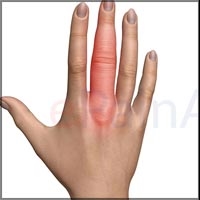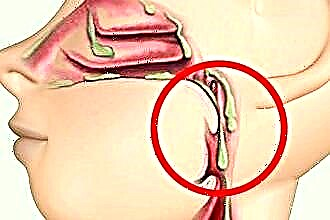 Adults are prone to thrush no less than children, since a sedentary lifestyle, constant stress and poor nutrition also significantly weaken the immune system and provoke the onset of the disease. Once ill with thrush, the patient can be ill with it all his life.
Adults are prone to thrush no less than children, since a sedentary lifestyle, constant stress and poor nutrition also significantly weaken the immune system and provoke the onset of the disease. Once ill with thrush, the patient can be ill with it all his life.
Difficulties in diagnosing candidiasis at the initial stage, improper treatment and low immunity predispose to the transition of pathology to the chronic stage. In this case, exacerbations are observed every month or even more often.
The incidence of fungi increases every year. Today, among the otolaryngological pathology of the oropharynx, candidiasis occupies about 40%.
It affects people of all ages and is often diagnosed with cheilitis, glossitis, or stomatitis. In comparison with bacterial diseases of the throat, thrush on the tonsils is much more severe.
Candidal lesion can take place in several forms, manifesting itself as hyperemic areas in the oropharynx or forming ulcerative defects on the tonsils, palatine arches and the posterior pharyngeal wall. This indicates the spread of the fungus and the progression of the pathology. In the case of a hyperplastic nature, whitish plaques may form on the mucous membrane, which, when attempted to be removed, leave a bleeding surface.
Causes
In 95% of cases, the cause of a fungal disease is candida fungi, which belong to conditionally pathogenic flora, but it is possible that the mucous membrane is affected by molds.
If a pregnant woman had thrush in the active phase, and in an untreated form, there is a high risk of infection of the newborn during its passage through the birth canal. In addition, pathogenic fungi can infect the oral mucosa if hygiene standards are not followed in the hospital. At the beginning of the disease, fungi are located in the surface layers of the throat, but as the disease progresses, they can infect deeper layers.
Candida in the throat develops against the background of weak immunity with:
- concomitant severe infection (tuberculosis);
- HIV AIDS;
- chronic infection of the throat or nasopharynx (sinusitis, tonsillitis);
- decompensated endocrine pathology (thyroid hypofunction, diabetes);
- metabolic disorders (obesity);
- long-term use of strong antibacterial, chemotherapeutic agents and cytostatics in high doses;
- hard physical work;
- constant stress;
- insomnia;
- avitaminosis;
- prematurity;
- blood diseases;
- unfavorable environment (industrial hazards);
- intrauterine pathology or infection;
- oncological diseases;
- developmental delay;
- burns of the oral mucosa.
Children under one year old suffer from candidiasis with malnutrition, diathesis, digestive dysfunction or non-observance of hygiene by a nursing mother.
Clinical symptoms
Throat candidiasis at the initial stage is almost invisible, which is why a person can live with the disease for a long time, without even knowing about it. External signs may be absent for up to three weeks. During this time, fungal pathogens multiply and damage the mucous membrane of the tonsils and throat.
It is much easier to suspect thrush in children by white curd deposits in the mouth.
Throat candidiasis is manifested by:
- dryness, scratching;
- tickling;
- burning sensations;
- itching;
- sore throat;
- redness of the throat;
- local lymphadenitis;
- swelling of the tonsils, which may cause discomfort;
- blooms of white or yellowish tint.
Of the common signs, it is worth highlighting malaise, decreased appetite and low-grade fever (not always). The acute stage is manifested by white patches or plaques on the tonsils. When trying to remove the film, an ulcerative defect remains, which bleeds.
In newborns, thrush of the throat gives the mother a lot of trouble, because the child can refuse to breast. To accurately determine whether this is a throat candidiasis or milk residues after feeding, it is enough to wipe the mucous membrane with a soda solution (3 g of soda per 250 ml of warm water). If it is milk, the mucous membrane will be completely cleared. With candidiasis, foci of white plaque will appear again.
It is not always possible to independently examine the pharynx. You can only see white deposits on the tonsils, palatine arches or the pharyngeal wall. Sometimes a whitish coating is located on the tongue and cheeks. To conduct a complete examination, you need to contact an otolaryngologist:
- if the disease develops due to the multiplication of candida fungi, the films on the tonsils have a curdled consistency of white color. When plaque is removed, a hyperemic mucosa with areas of erosive lesions remains. They can bleed, so do not be surprised if there is an admixture of blood in the saliva when spitting;
- when a thrush in a child's throat develops due to molds, the films are yellowish in color and are rather difficult to remove from the surface of the tonsils. When trying to remove plaque, the mucous membrane begins to bleed, so the doctor should be careful to distinguish candidal films from diphtheria.
When thrush spreads to the larynx or pharynx, coughing, belching, and an unpleasant odor from the oral cavity appear. In a child, in most cases, the cause of the disease is cruz fungi, the reproduction of which occurs against the background of weak immune protection and poor nutrition.
How to confirm thrush
Diagnosis of candidiasis is difficult due to the presence of many diseases with a similar clinical picture:
- stomatitis - develops after prolonged antibiotic therapy and is accompanied by the same symptoms. A distinctive feature is the presence of a pronounced inflammatory process, ulcerative defects and mucosal edema. If, during stomatitis, a white plaque covers the ulcers, it can be confused with candidiasis;
- leukoplakia - characterized by a sharp thickening of the mucous membrane and its darkening;
- syphilis - manifested by white papules that protrude above the surface of the gums and oral mucosa;
- diphtheria betrays itself with febrile fever and severe intoxication. If a person has been immunized, the clinic will not be so pronounced, so there is a chance of mistaking it for candidiasis;
- leptotrichosis - develops as a result of the multiplication of filamentous bacteria, which normally live on the oral mucosa. Clinically, the disease is manifested by the presence of white plaques on the tongue and glands, while the mucous membrane remains unaffected and moist. The person is worried about burning and pain in the pharynx. The intense pain may make it difficult to speak. For the same reason, patients refuse to eat. Corks of a white or grayish hue are deposited in the lacunae of the tonsils, from where it is quite difficult to remove them. Even if it is possible to clear the tonsils from the plugs, the next day they appear again. The general condition does not change, and the lymph nodes are not inflamed.
Diagnosis of candidiasis begins with a survey of complaints that bother the patient. Also, the otolaryngologist asks the features of the onset and progression of symptoms, analyzes anamnestic information. It is especially important to find out the presence of previous antibiotic therapy, intake of corticosteroids and cytostatics.
Suspecting a sore throat, the doctor examines the oropharynx with pharyngoscopy. During the examination, plaques of a whitish, yellow or gray hue are revealed.
Without laboratory research, it is impossible to accurately confirm the fungal origin of the disease.
 For cultural and microscopic analyzes, material is collected from the surface of the tonsils (scraping, smear). With the help of microscopy, fungi and their spores can be detected in a short time. The cultural method takes more time, but is more informative. It makes it possible to establish the type of mushrooms and their resistance to antimycotic agents.
For cultural and microscopic analyzes, material is collected from the surface of the tonsils (scraping, smear). With the help of microscopy, fungi and their spores can be detected in a short time. The cultural method takes more time, but is more informative. It makes it possible to establish the type of mushrooms and their resistance to antimycotic agents.
To identify the cause of thrush, an analysis of hormones is prescribed, the state of the immune system is analyzed, and additional consultations are carried out with an endocrinologist, allergist or immunologist.
Treatment with traditional and non-traditional methods
Medicines are selected individually, taking into account the type of fungi and the presence of concomitant pathology. During treatment, it is necessary to adhere to a dietary diet, spicy, salty and peppery foods are prohibited, dairy products are limited. Breastfeeding should not be interrupted, because milk contains many immune components.
The dishes must be thoroughly washed, the nipples must be sterilized. Systemic therapy involves the appointment of Fluconazole, Intraconalose, or Ketoconazole. They have powerful antifungal effects. Gargling is carried out by Miramistin. Instillation and washing of the tonsils are also shown.
In addition, antihistamines are used, for example, Loratadin, Erius, Suprastin, and vitamins B, C. Probiotics (Linex, BioGaya) are used to restore microflora. Do not forget about strengthening the immune system with Echinacea.
Alternative methods can be used as an auxiliary therapy:
- Dissolve 15 g of golden mustache juice in 220 ml of water and add 5 ml of lemon juice. The product is suitable for rinsing the oropharynx three times a day to combat candida and activate regenerative processes;
- 30 g of flaxseeds, you need to pour 230 ml of boiling water and leave for an hour under the lid. The solution is used to lubricate the oral mucosa with a moistened gauze swab;
- Candida fungus in the throat can be fought by enhancing immune defenses with cranberry juice, which contains a lot of vitamin C. The juice must be diluted 1: 1 with water and rinsed after meals;
- 50 g of St. John's wort (flowers or grass can be used) must be poured with olive oil in a volume of 200 ml and insisted for two days. The affected areas of the mucous membrane should be lubricated with the prepared healing agent.
During the course of the treatment, it is required to quit smoking, drinking alcohol, and also avoid nervous tension.
Complications of thrush of the throat
 If thrush on the tonsils is detected at a late stage or inadequate treatment has been carried out, the risk of complications increases. They are associated with deep damage to the tonsils and the spread of infection:
If thrush on the tonsils is detected at a late stage or inadequate treatment has been carried out, the risk of complications increases. They are associated with deep damage to the tonsils and the spread of infection:
- with the appearance of ulcerative areas and erosion, secondary bacterial infection occurs, because the integrity of the mucous membrane, which performs a barrier function, is violated. The multiplication of bacteria leads to the appearance of abscesses and abscesses;
- fungi can cover the larynx, pharynx and trachea;
- fungal sepsis.
It is possible to suspect a lesion of the larynx on the basis of symptoms such as cough in the form of attacks and signs of pharyngitis. It is especially important not to start taking antibiotics when a sore throat appears, as many of us often do when we suspect a sore throat. This will not only not be effective, but also aggravate the course of the pathology.
Laryngeal candidiasis in children often develops after whooping cough or is a complication of bronchitis. In the treatment, local and systemic antimycotic drugs are used, as well as physiotherapy procedures.
From physiotherapy, UFO is prescribed for two days. Then, after a two-day break, the course is repeated again. There are 10 procedures in total.
Prevention and prognosis
It is much easier to adhere to preventive recommendations than to treat thrush. To prevent illness, you must:
- strictly monitor the duration and dose of strong antibacterial, chemotherapeutic agents and glucocorticosteroids;
- regularly sanitize chronic infectious foci (tonsillitis, adenoids);
- timely treat endocrine and somatic pathology;
- maintain immune protection at a sufficient level (vitamins, proper nutrition, good sleep, lack of stress, control of physical activity, walks in the fresh air);
- observe hygiene rules.
To get rid of thrush, you need to go to it for a long time and painstakingly, strictly taking the prescribed drugs. Complete recovery can be considered based on negative results of laboratory diagnostics after the end of treatment.
To avoid fungal problems, you need to adhere to our recommendations and do not forget about spa holidays.



